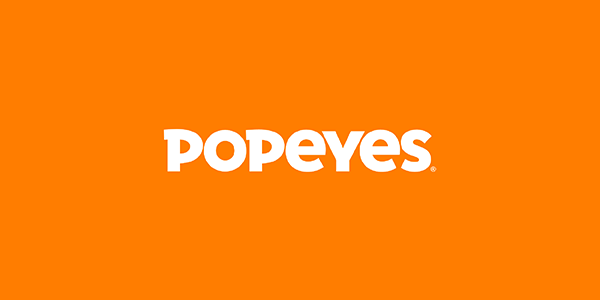How Retail Media Networks Can Win With Mid-Market Companies

Many retail companies are racing to build their own retail media networks (RMNs) to stay competitive and drive revenue. In fact, the retail media networks market is projected to grow to $31.7 billion by 2028.
However, these networks often cater only to large enterprises, leaving smaller suppliers out of the equation. For example, a large retailer works with around 14,000 suppliers, but its retail media network primarily focuses on the top 10%—the big players with hefty budgets. This leaves 13,000 smaller suppliers with limited access to advertising opportunities, even though collectively, they represent significant potential.
The challenge for retailers like this is to tap into this broader supplier base without compromising data security, supply chain integrity or creative guidelines. In addition, retailers are missing out on non-endemic advertisers—companies outside their core business, like insurance firms—that would still benefit from reaching their customer base.
Additionally, many brands are struggling with the need for measurable outcomes from their advertising efforts. They want to know if their ads drive sales, but the retailer often controls this data, making attribution difficult for smaller brands.
Retailers are exploring new channels, formats, and products to grow their ad business, but they often hit a ceiling with their current approach. At StackAdapt, we see an opportunity to help retailers access a broader range of demand, particularly from mid-market and non-endemic advertisers, in a simpler, more efficient way.
Why Retail Media Networks Should Work With a DSP
When I was at Walmart Connect, we initially focused on the top 10% of advertisers. It took us years to build the staff and resources needed to expand our reach beyond this elite group. However, not every retail media network has the budget or manpower that Walmart does to develop products and scale operations. Most networks don’t have the capital to build their own tech stack or hire a thousand-person team, making it crucial to find strategic partners to level the playing field.
This challenge is particularly relevant for major retail media networks whose current approach to mid-market and smaller businesses isn’t fully effective. These retailers are used to providing highly-customized solutions for enterprise clients like Procter & Gamble, who have the resources and need for that level of control and customization. But this model doesn’t translate well to the mid-market.
When retail media networks try to create self-serve platforms for smaller businesses, they often complicate the process rather than simplify it. For instance, some large publishers have built their own ad managers, but this approach fragments the buying process. Local advertisers don’t want to manage campaigns across 50 different platforms, which not only creates more work for them, but also fails to fully capture the mid-market and small-business audience that these retailers aim to reach.
The more logical approach is to meet these businesses where they already are, rather than forcing them into a new ecosystem. Instead of building separate platforms for the mid-market, retailers should integrate their offerings into existing demand-side platforms (DSPs) already trusted by these businesses. This approach allows retailers to maintain control over brand guidelines and targeting while making it easy for smaller companies to participate.
In short, partnering with a DSP enables retail media networks to reach the mid-market efficiently and effectively without burdening these businesses with a complex new system. It’s about making the process seamless and accessible so everyone benefits.
RMN Solutions for Mid-Market and Small Companies
RMNs traditionally have been tailored to meet the needs of large enterprises, but to capitalize on the potential of mid-market and smaller companies, these solutions must be adapted. Successful examples from companies like Pinterest and Meta demonstrate how RMNs can evolve to meet the demands of this crucial segment.
Here’s why this adaptation is essential:
1. Streamlined Processes and Automation
Mid-market companies greatly benefit from fewer steps and automated options in campaign management. Meta’s ad creation tools, for instance, simplify the process, allowing businesses to manage their campaigns efficiently without the need for extensive resources. RMNs can adopt similar features to enhance user experience and efficiency.
2. Flexible Pricing Models
Adjusting pricing models to accommodate mid-market budgets and offering tiered options can make RMN solutions more accessible. RMNs can provide different service levels and pricing to cater to businesses of varying sizes, so even those with smaller budgets can participate and see value.
3. Robust Support and Educational Resources
Mid-market companies often lack the in-house expertise that larger enterprises have. Offering strong support and educational resources helps these businesses maximize the potential of RMN tools. Providing clear guidance and accessible resources ensures that mid-market companies can fully leverage the platform’s capabilities.
4. Accessible Enterprise Tools
When mid-market companies have access to enterprise-level tools, they gain the ability to track clear advertising results. This transparency encourages further investment and fosters brand loyalty. RMNs that provide these tools enable smaller companies to achieve their goals, driving deeper engagement and long-term commitment.
5. Inclusive Ecosystem
RMNs can drive greater adoption of their platforms if they adapt their solutions to meet the needs of mid-market companies. This allows smaller companies to benefit from advanced capabilities and fosters a more inclusive ecosystem where businesses of all sizes can thrive.
The Role of Programmatic Platforms Partnerships
While adapting these solutions is crucial, the process can be costly and complex. This is where partnerships with DSPs or programmatic platforms like StackAdapt can help.
These partnerships offer RMNs a way to simplify adoption while providing measurable and impactful solutions. Key benefits of these partnerships include:
- Lower adoption hurdles: Integrating RMNs with platforms that mid-market brands already use, such as StackAdapt, eases the transition into RMN ecosystems. This reduces the friction of adopting new tools and processes, making it easier for mid-market companies to engage.
- Simple measurement: Programmatic partnerships provide granular, easy-to-use tools that allow mid-market brands to track their performance effectively. These simplified measurement capabilities enable data-driven decisions without requiring large budgets or extensive analytics teams.
- Turnkey creative solutions: Offering ready-made, retailer-approved content and templates through DSPs simplifies the creative process for mid-market brands. This encourages testing and experimentation, increasing spending and better campaign outcomes.
- Best-in-class service: DSP partners provide top-notch customer support, ensuring a seamless experience for mid-market companies. These partners act as an extension of the in-house RMN team, offering tailored support that meets the specific needs of this market segment.
In summary, these collaborations reduce adoption barriers, provide measurable results, and create a more efficient, inclusive advertising ecosystem where companies of all sizes can succeed.
Ready to explore a partnership with StackAdapt and expand your RMN? Book a demo today to get started.






